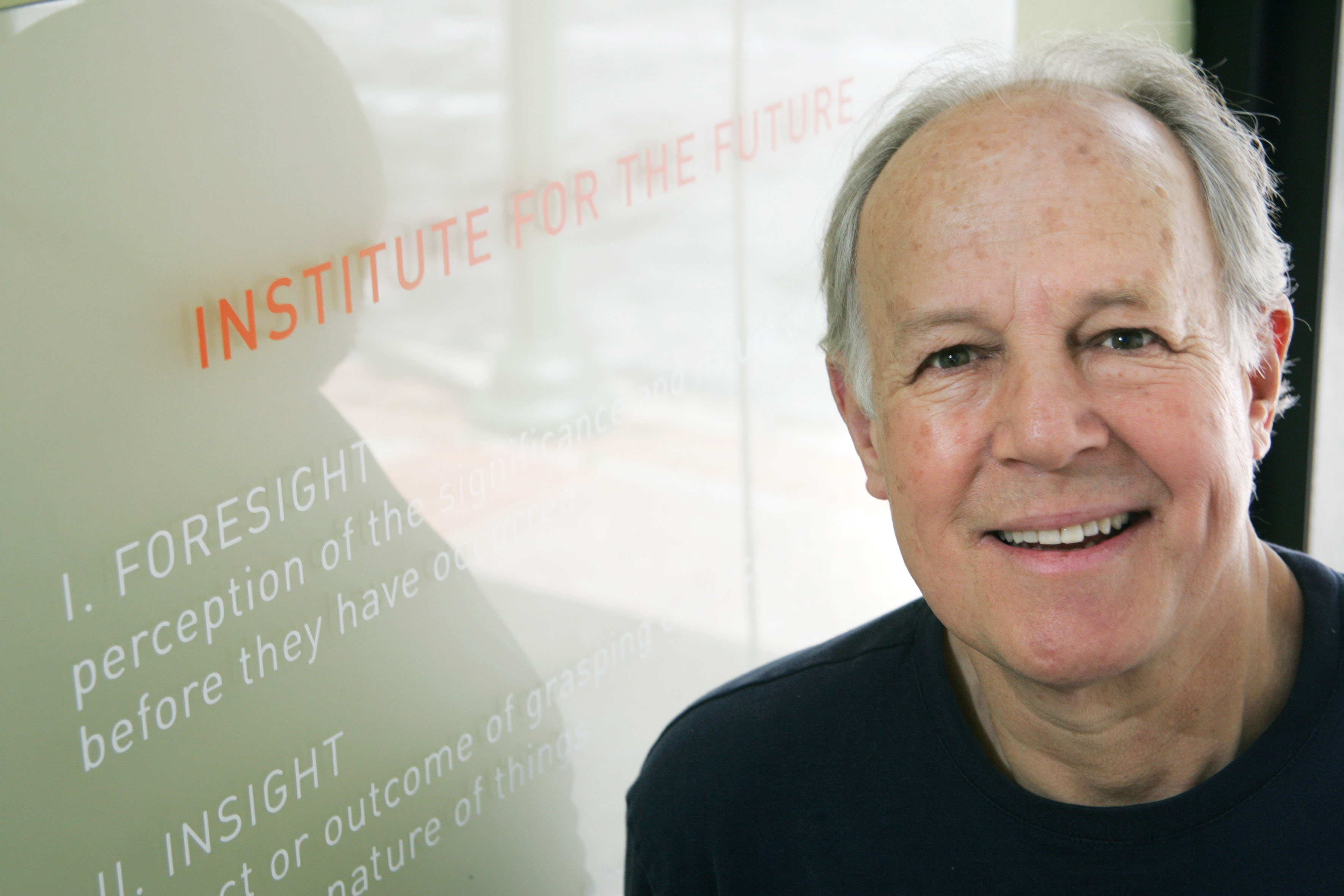
Important Dates
Call for Papers
Organizing Committee
Program Committee
Author Information
Paper Submission
Camera Ready Submission
Technical Program
Keynote Speakers
Conference Registration
Venue
Travel & Hotel
Sponsors
Contact Us
Past Conferences
Larrabee: A Many-Core x86 Architecture for Visual Computing
Monday, October 5, 9:15-10:15

Ed Grochowski
Intel Corporation
Abstract:
This talk presents a many-core visual computing architecture code named Larrabee, a new software rendering pipeline, a many-core programming model, and performance analysis for several applications. Larrabee uses multiple in-order x86 CPU cores that are augmented by a wide vector processor unit, as well as some fixed function logic blocks. This provides dramatically higher performance per watt and per unit of area than out-of-order CPUs on highly parallel workloads.
Bio:
Ed Grochowski is a Senior Principal Engineer at Intel Corporation in Santa Clara, California. Ed joined Intel in 1986 and has had various technical and managerial responsibilities in the Intel i486, Pentium, Pentium II, and Itanium microprocessor design teams. He worked on microarchitectural techniques for energy-efficient chip multiprocessors in Intel's Microprocessor Research Labs, and is currently working on the design of a future graphics processor. Ed received his B.S.E.E. and his M.S.E.E. from the University of California, Berkeley.
Technology foundations and applications for contextual computing and combinatorial services
.Monday, October 5, 18:30-21:00
Chair: Jim Sproch, Synopsys

Mike Liebhold
Senior Researcher
Institute For The Future
Abstract:
Among many possible futures of disruptive computing I will focus this talk on some applications and technologies for two major emerging themes: first; highly personalized mobile and pervasive contextual computing, by systems engineered proactively to queue up precise process and data for realtime applications, and second; combinatorial services orchestrating mobile, local and cloud served supercomputing on demand for applications like human interaction, sensing and pattern recognition, mining and reasoning, rendering, modeling and simulations.
Bio:
Mike Liebhold is a Senior Researcher focusing on technology foundations for contextual computing and and immersive media. At IFTF Mike has served as a principal investigator or author and project leader for a number of private projects at IFTF projects on the foundations of context aware computing, and cost shared research programs at IFTF including:
- Futures of Mobility
- Futures of Automobile Information Systems
- Context Awareness: Technologies, Applications, and Impacts
- Infrastructures for the New Geography
- Blended Realities: Reports from the Digital/Physical Future
- Open Mobile Ecosystems
- Mobile Health: Technologies and Information Architectures
- Futures of Abundant Supercomputing
Mike is a frequent speaker on the futures computing and communications and recently contributed to a team paper authored paper for a special edition of the IEEE Journal on Pervasive Computing, “Data Management in the World-Wide Sensor Web.” Recently Mike has been leading work at IFTF on technology ecologies for real time services. Most recently Mike delivered an invited keynote on personal contextual services and clinical information ecologies for Senior team of US Department of Health and Human Services technology planners.
Before coming to the Institute, Mike was briefly a visiting researcher at Intel Labs, working on a pattern language for contextual computing based on semantic web frameworks for ubiquitous computing. Previously, Mike worked on several startups involving: large-scale international public IT services and IP networks for rural and remote regions; a complete IT architecture for schools in Shandong Province, China; satellite networks in India, Europe, and Latin America. Mike was a senior consulting architect at Netscape Communications and a founding member of Netscape Investors board. Prior to that, he served as the Vice President, Chief Technology Officer for Times Mirror Publishing, leading launch of 20+ www services.
For ten years prior, he was Senior Scientist for Apple Computer, Principally responsible in the Advanced Technology Group for leading long-term investigations into technologies, architectures, and applications related to convergence of computing, high-speed communications and digital interactive media technologies. Initiated research leading to development of many Apple products including: broadband interfaces, digital video architecture, cd-rom hardware and software, Apple II video hardware, Macintosh interactive video software, QuickTime media software.
What should one do with dark silicon?
Tuesday, October 6, 9:00-10:00

Krisztian Flautner
ARM
Abstract:
Silicon technology evolution over the last four decades has yielded an exponential increase in integration densities with steady improvements of performance and power consumption at each technology generation. This steady progress has created a sense of entitlement for the riches that future process generations would bring. Today, however, classical process scaling seems to be dead and living up to technology expectations requires continuous innovation at many levels, which comes at steadily progressing implementation and design costs. Solutions to problems need to cut across layers of abstractions and require coordination between software, architecture and circuit features.
Bio:
Krisztián Flautner is the vice president of research and development at ARM Ltd. ARM designs the technology that lies at the heart of advanced digital products with more than fifteen billion processors deployed by mid 2009. He leads a global team which is focused on the understanding and development of technologies relevant to the proliferation of the ARM architecture. The group’s activities cover a wide breadth of areas ranging from circuits, through processor and system architectures to tools and software. Key activities are related to high-performance computing in energy-constrained environments. Flautner received a PhD in computer science and engineering from the University of Michigan, where he is currently appointed as a visiting scholar. He is a member of the ACM and the IEEE.
The content and material posted on this web page represent solely the views and opinions of the ICCD conference.